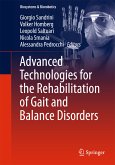This book focuses on the advances in transtibial prosthetic technology and targets research in the evolution of the powered prosthesis such as the BiOM, which was derived from considerable research and development at the Massachusetts Institute of Technology. The concept of the book spans the historical evolution of prosthetic applications from passive to new and futuristic robotic prosthetic technologies. The author describes the reasons for amputation, surgical procedures, and an historical perspective of the prosthesis for the lower limb. He also addresses the phases and sub-phases of gait and compensatory mechanisms arising for a transtibial prosthesis and links the compensatory mechanisms to long-term morbidities. The general technologies for gait analysis central to prosthetic design and the inherent biomechanics foundations for analysis are also explored. The book reports on recent-past to current-term applications with passive elastic prostheses. The core of the book deals with futuristic robotic prostheses including their function and major subsystems, such as actuator technology, state machine control, and machine learning applications. Finally, the envisioned future trends in the prosthetic technology space are presented.
Dieser Download kann aus rechtlichen Gründen nur mit Rechnungsadresse in A, B, BG, CY, CZ, D, DK, EW, E, FIN, F, GR, HR, H, IRL, I, LT, L, LR, M, NL, PL, P, R, S, SLO, SK ausgeliefert werden.









